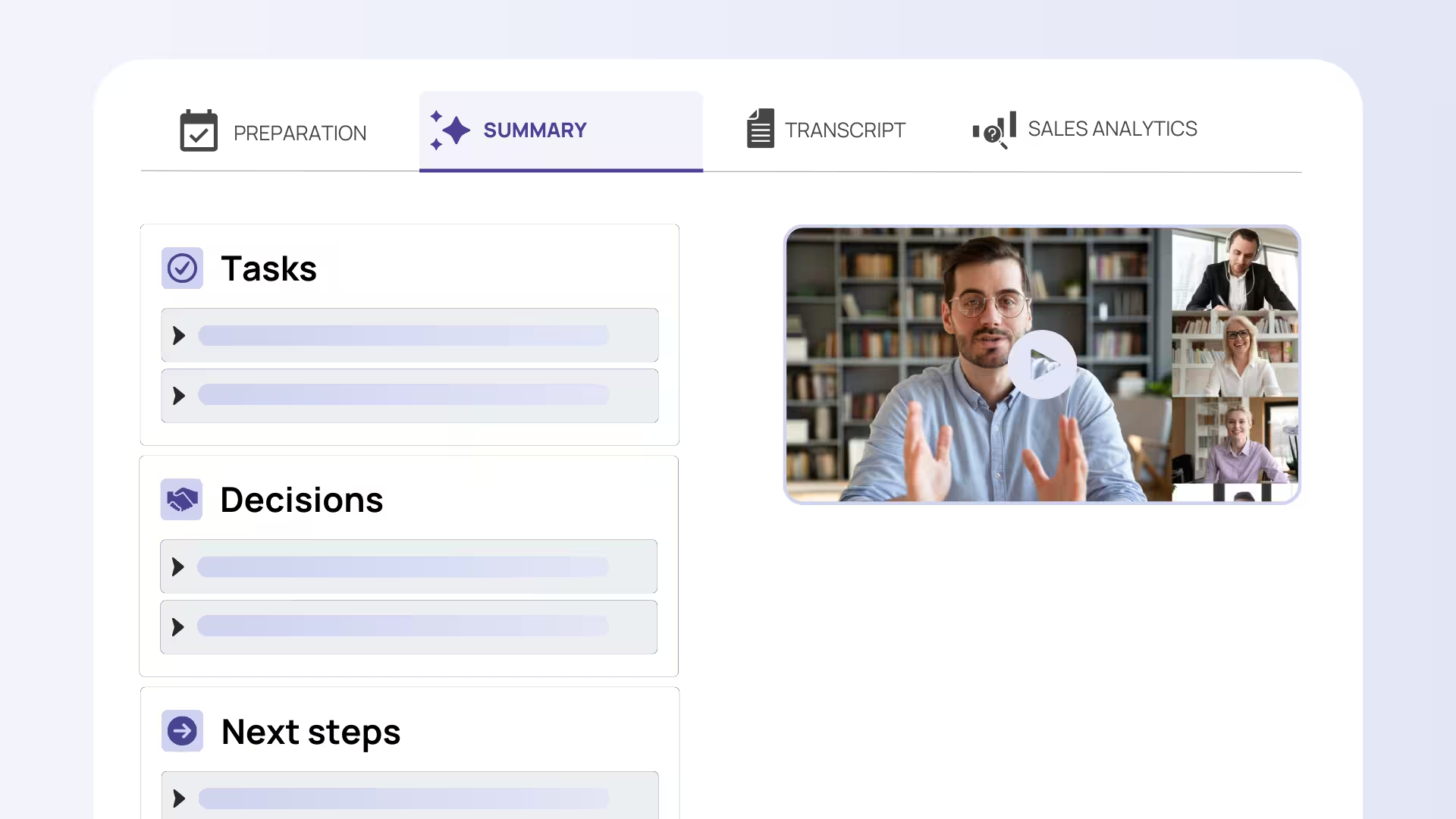Table of Contents
Employee conversations are the heart of successful personnel management. They can motivate teams, unlock potential, and strengthen collaboration – or lead to frustration when poorly prepared. This article shows you how to conduct employee conversations that offer real value to both you as a leader and your employees. From strategic preparation through professional conversation management to sustainable follow-up, you'll learn proven methods and modern approaches for successful conversations.
Conducting Employee Conversations – Why It's So Important
Employee Conversations as a Central Leadership Tool
A professionally conducted employee conversation is far more than a mandatory exercise – it's a strategic instrument of personnel development. These conversations not only promote the performance and motivation of your employees but also create the foundation for sustainable trust-building. They provide the opportunity to clarify expectations, identify development potential, and define common goals.
Particularly valuable is the impact on employee retention and corporate culture. Regular, structured conversations signal appreciation and show that you as a leader are interested in the personal and professional development of your employees. This not only strengthens the individual relationship but also positively shapes the entire work atmosphere.
Current Studies and Trends
The importance of structured employee conversations is impressively confirmed by current research results. A 2023 Gallup study shows that 87% of leaders who systematically prepare their conversations rate their effectiveness significantly higher. This underscores the central role of preparation for conversation success.
The Harvard Business Review reported in 2022 that an open feedback culture can increase employee satisfaction by up to 20%. Companies that regularly provide constructive feedback and promote dialogue on equal footing benefit from higher motivation and lower turnover.
However, studies also show room for improvement: Only about 40% of employee conversations are accompanied by concrete measures and follow-up. There's enormous potential for improvement here, as follow-up is crucial for the sustainable impact of conversations.
Successful Preparation for Employee Conversations
Setting Goals and Topics
Thoughtful employee conversation preparation begins with defining clear conversation goals. Consider in advance which aspects should be the focus: Is it primarily about performance evaluation, development planning, or career counseling? Formulate specific, measurable goals for the conversation.
Select relevant topics and communicate them to your employees in advance. This enables better preparation on both sides and ensures a focused conversation flow. Typical topics include goal achievement from the past period, current challenges, continuing education wishes, and future projects.
Gathering Information and Documents
Collect all relevant information necessary for informed conversation management. This includes performance data, existing goal agreements, team feedback, and documented development measures. Also prepare your own notes and supporting arguments to guide the conversation in a structured manner.
Good documentation of past conversations helps track developments and ensure continuity. This also demonstrates your professionalism and commitment to employee development.
Inviting Employees to Active Participation
Successful employee conversations thrive on active participation from all involved parties. Invite your employees to collaborate on the agenda and contribute their own topics. This promotes a sense of personal responsibility and ensures balanced conversation management.
Motivate your employees to reflect on and articulate their own experiences, successes, challenges, and wishes. This creates the foundation for open dialogue and shows that you value their perspective.
Structured Flow of an Employee Conversation
Opening the Conversation – Setting the Framework and Creating Atmosphere
The first impression shapes the entire conversation. Begin with a friendly greeting and create a positive setting. Choose a quiet, undisturbed environment and signal openness and attention through your body language.
Briefly outline the conversation goal and planned flow. This provides orientation for all participants and reduces possible uncertainties. Emphasize the constructive nature of the conversation and your readiness for open dialogue.
Review of the Past Period
The review forms the foundation for informed evaluation and planning. Together, examine the performance, successes, and challenges of the past period. Use open questioning and practice active listening to get a complete picture.
Let your employees first express their own assessment. This promotes self-reflection and gives you valuable insights into their perspective. Then supplement with your observations and evaluations.
Giving Feedback – Constructive and Appreciative
Giving feedback in employee conversations is an art that requires sensitivity. First highlight positive performance and acknowledge successes. This creates a trusting atmosphere and motivates for continued collaboration.
Address areas for improvement specifically and constructively. Focus on observable behavior and avoid blanket assessments. Use proven communication methods like I-messages or the sandwich method to address difficult topics appreciatively.
Joint Goal Setting and Development Planning
Goal setting employee conversations is a central building block for future success. Together define SMART goals that are Specific, Measurable, Attractive, Realistic, and Time-bound. These criteria ensure clarity and traceability.

Discuss concrete development opportunities and continuing education possibilities. Consider both the requirements of the current position and long-term career and potential development. This shows your interest in personal development and strengthens employee retention.
Conversation Closure and Summary
A professional conversation closure summarizes the most important results and creates clarity about next steps. Clarify all open questions and ensure both sides have the same understanding of the agreements.
Set concrete follow-up dates and define responsibilities for next steps. This emphasizes the commitment of agreements and ensures continuous support for development.
Success Factors and Special Challenges in Employee Conversations
Using Emotional Intelligence in Conversations
Handling emotions is a crucial success factor when conducting employee conversations. Emotional intelligence enables you to recognize, understand, and respond appropriately to feelings and moods. This builds trust and creates a constructive conversation atmosphere.
Show empathy and strengthen the trust foundation through active listening and appreciative behavior. The FEEL method (Face emotions, Empathize, Explore, Listen) supports you in recognizing emotions and addressing them professionally.
Mastering Difficult Conversations with Confidence
Not all employee conversations run harmoniously. Conducting difficult conversations requires special communication skills and emotional stability. Whether dealing with conflicts, criticism, or uncomfortable topics – maintain calm and stay factual.
Use proven communication strategies like Nonviolent Communication (NVC) or the sandwich method to address difficult topics constructively. These techniques help de-escalate conflicts and find common solutions.
Considering Cultural Differences
In multicultural teams, it's important to consider cultural particularities in communication. Different cultures have varying expectations regarding directness, hierarchy, and feedback culture. Adapt your communication style accordingly.
While some cultures prefer direct communication, others appreciate a harmony-oriented, more indirect approach. Learn about the cultural backgrounds of your employees and design conversations with appropriate sensitivity.
Don't Neglect the Follow-up
Employee conversation follow-up is often the weakest point in the conversation process, although it's crucial for sustainable success. Document all conversation results in a structured manner and record concrete measures and responsibilities in writing.
Establish a regular follow-up system to track progress and make adjustments when necessary. This demonstrates your commitment to implementing agreements and strengthens the commitment of conversations.
Modern Support for Employee Conversations – Using Digital Tools Effectively
Advantages of Digital Solutions for Preparation and Documentation
Modern digital tools for employee conversations can significantly facilitate the entire conversation process. HR software supports structuring conversations, scheduling, and systematic documentation. Feedback apps enable continuous feedback between formal conversations and promote an open communication culture.
These tools also offer valuable analysis capabilities to recognize development trends and continuously improve conversation quality. Digitalization makes employee conversations more efficient and transparent.
AI-Supported Analysis and Automated Documentation – Example "Sally"
Innovative AI tools like Sally revolutionize the documentation and follow-up of employee conversations. Through automatic transcription and intelligent summarization of conversations, follow-up is significantly simplified. Sally can automatically identify and structure the most important points, agreements, and measures.
Integration into existing systems like CRM or project management tools ensures seamless workflows and improved traceability. This not only saves time but also increases documentation quality and enables better analysis of development patterns and conversation flows.

Conclusion: The Key to Successful Employee Conversations
Employee conversations are a unique opportunity to strengthen motivation, develop potential, and improve collaboration. Success depends significantly on thorough preparation and clear structure. Those who employ emotional intelligence and practice professional conversation management significantly increase both acceptance and quality of conversations.
It's particularly important to create an open atmosphere where employees can actively participate. Follow-up with concrete measures and regular follow-up ensures sustainable impact. Modern digital tools can provide valuable support and make the entire process more efficient.
With this structured approach and the presented methods, you can confidently conduct every employee conversation and thereby positively influence employee satisfaction and company success. The investment in high-quality employee conversations pays off long-term through higher motivation, better performance, and stronger retention.

Try meeting transcription now!
Experience how effortless meeting notes can be – try Sally free for 4 weeks.
Test NowOr: Arrange a Demo Appointment

.avif)



